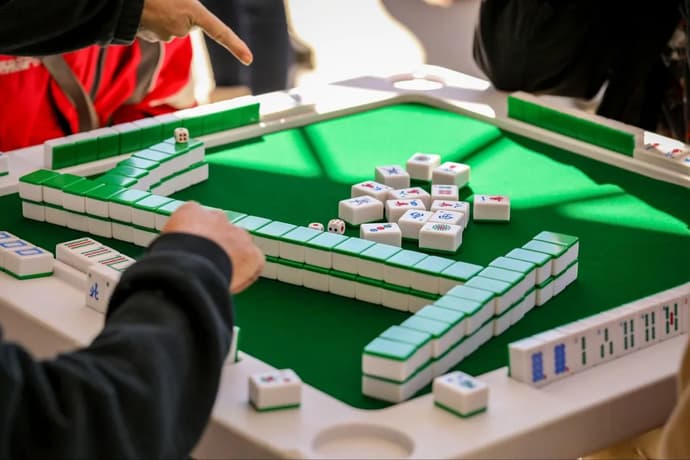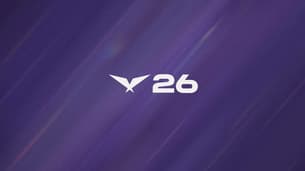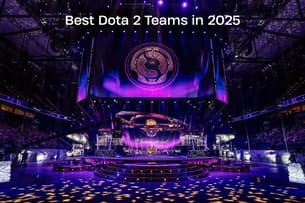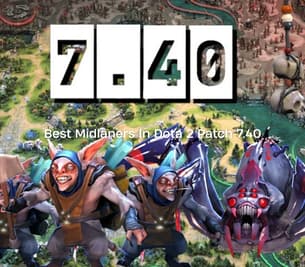
What’s the Ultimate Skill Game Between Mahjong vs. Hearthstone vs. Poker?

Mahjong often gets overlooked next to poker and Hearthstone, yet it combines serious tactical demands with one of the largest global player bases at over 600 million. Hearthstone, by comparison, has over 100 million lifetime downloads but now averages under 4 million active users monthly.
Mahjong challenges players to manage 136 tiles, track discards across the table, and calculate unseen combinations. Poker relies more on fixed card odds and betting patterns. With a global market estimated at up to $4 billion, Mahjong rewards sustained focus, memory accuracy, and subtle bluffing. It is more strategic than many players expect at first glance.
The Move from Tabletop to Digital Isn’t Just About Convenience
All three games have transformed. Hearthstone was digital from the start, but poker and Mahjong have seen sharp moves from physical tables to online platforms. This change has made games more accessible, faster-paced, and globally competitive. Digital Mahjong platforms now include ranked ladders, real-time analysis tools, and automated scoring, which streamlines gameplay while preserving strategic integrity.
These virtual spaces also offer added flexibility, particularly for skilled players who value efficient play sessions and convenient banking systems. Platforms like mahjong365.com cater to that demand, offering tools for serious players who prioritize fast withdrawals, consistent interface quality, and high-level competitive play without sacrificing the tactical depth that defines Mahjong.
How Mahjong, Poker and Hearthstone Became Digital Staples
Over the past two decades, Mahjong, poker, and Hearthstone have each moved into globally accessible digital formats, but the way that happened reflects where each game began. Mahjong, once played in city parlors and private homes, now supports a multibillion-dollar online market, especially across Asia-Pacific. Digital platforms replicate their full rule set and layer in real-time scoring, ranked modes, and automatic tile sorting. This helps experienced players compete more efficiently without losing the tactical demands of the game. Poker went from casino rooms and home tables to international platforms with millions of players.
After televised events helped push it into the mainstream, online platforms now host tournaments, quick-play formats, and real-money tables with fast payouts and steady volume. Hearthstone launched directly into this environment, designed from the start as a screen-based card battler.
Its player base topped 100 million and still sees high daily activity. What all three now offer is consistency, access, and speed. Whether through mobile apps or browser platforms, they allow for shorter sessions, more precise analytics, and a wider pool of competition. That makes them not only easier to join but also more rewarding for players focused on strategy and performance.
Long-Term Planning and Tile Sequencing
In Mahjong, how you order and time your tiles can decide the entire round. Building a viable hand means thinking five, ten, or even fifteen moves ahead. Every claimed tile can broadcast intent or mislead an opponent. Hearthstone may ask players to build around synergy, and poker punishes poor pre-flop calls, but Mahjong links each decision with irreversible consequences of the round.
Memory and Calculation Under Pressure
Skill-based games come in many forms, but few compare in complexity and longevity to Mahjong. While digital card battlers like Hearthstone or traditional mainstays like poker often dominate competitive discussions, Mahjong’s mix of tile logic, memory work, and subtle bluffing earns it a place in the upper tier of strategy games.
While Hearthstone decks cap out at 30 cards and poker uses 52 with known distributions, Mahjong presents a broader memory challenge: 136 tiles, four players, and countless meld configurations. Players must recall who discarded what, infer risk from what’s missing, and decide whether an opponent’s silence hides a tenpai hand. It’s a real-time mental calculus that punishes the unfocused.
Bluffing, Reading the Table, and Subtle Deception
Poker players bluff with body language and bets. Hearthstone players manipulate tempo or bait out the removal. In Mahjong, bluffing is tied to tile exposure and discard patterns. A player may discard a potentially valuable tile early to feign weakness, or intentionally break a meld to bait a draw. The psychological dance happens silently, tile by tile, without a single chip or voice raised.
Dynamic Adaptation vs Static Engines
Games like Hearthstone rely heavily on static engines through their deck builds, predictable mana curves, and card synergies. Poker’s hand possibilities are fixed, with variance mainly in player psychology. Mahjong complicates things further: wind changes, dora tiles, self-draw bonuses, and rotating dealer roles create a dynamic, layered strategy where nothing stays constant. The meta is embedded in the match, not the ruleset.
Rewarding Mastery and Edge-Play
Hearthstone may reward meta familiarity and poker might reward bankroll strategy, but Mahjong demands internalized pattern recognition. Players develop intuition not from guides but from experience, learning when to fold a promising hand to play defense or when a risky discard might be worth the lead. That level of decision-making is harder to script and harder still to master.
Conclusion
Each game has its type of strategic depth. Poker emphasizes social prediction, Hearthstone rewards tactical sequencing, but Mahjong synthesizes both into a relentless logic engine. It’s less about luck than learning, and more about inference than impulse. It’s undeniable that Mahjong holds its own as a deeply layered game that tests planning and perception.

Kateryna Prykhodko är en kreativ författare och pålitlig medarbetare på EGamersWorld, känd för sitt engagerande innehåll och sin känsla för detaljer. Hon kombinerar storytelling med tydlig och genomtänkt kommunikation och spelar en viktig roll i både plattformens redaktionella arbete och interaktioner bakom kulisserna.
 LCK Cup 2026 Tittarguide: Datum, schema, format, deltagareFullständig guide till LCK Cup 2026: turneringsformat, detaljer om gruppspelet och officiellt schema. Kolla uppdaterade laguppställningar för T1, Gen.G, HLE och andra lag som tävlar om platser i First Stand.
LCK Cup 2026 Tittarguide: Datum, schema, format, deltagareFullständig guide till LCK Cup 2026: turneringsformat, detaljer om gruppspelet och officiellt schema. Kolla uppdaterade laguppställningar för T1, Gen.G, HLE och andra lag som tävlar om platser i First Stand. Bästa Dota 2-lagen 2025Dota 2 bästa lagen under säsongen 2025 - topp 10-ranking baserat på turneringsresultat och lagprestationer.
Bästa Dota 2-lagen 2025Dota 2 bästa lagen under säsongen 2025 - topp 10-ranking baserat på turneringsresultat och lagprestationer. LCS 2026 Lock-In Viewer Guide: Datum, schema, format och deltagande teamUtforska LCS 2026 Lock-In-återupplivandet. Få information om Bo3 Swiss Stage, Fearless Draft Playoffs och fullständiga laguppställningar inklusive Cloud9, FlyQuest och LYON. Din ultimata tittarguide.
LCS 2026 Lock-In Viewer Guide: Datum, schema, format och deltagande teamUtforska LCS 2026 Lock-In-återupplivandet. Få information om Bo3 Swiss Stage, Fearless Draft Playoffs och fullständiga laguppställningar inklusive Cloud9, FlyQuest och LYON. Din ultimata tittarguide. Bästa midlaners i Dota 2 Patch 7.40Upptäck de bästa midlanerna i Dota 2 Patch 7.40 - förbättringar, styrkor och vinstprocent.
Bästa midlaners i Dota 2 Patch 7.40Upptäck de bästa midlanerna i Dota 2 Patch 7.40 - förbättringar, styrkor och vinstprocent.


